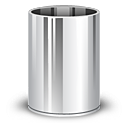|
|
|
|
|
|
ACR-700 - Advanced CANDU Reactor
|

|


|

|
ACR700 (Atomic Energy of Canada Limited): AECL's "Advanced CANDU Reactor" ACR70016 has been developed over a lengthy period of time and is considered by its vendor to be an evolution from AECL's internationally successful CANDU line of PHWRs. CANDU reactors and their Indian derivatives have been more of a commercial success than any other line of power reactors except the LWRs. One of the innovations in the ACR700, compared to earlier CANDU designs, is that heavy water is used only as a moderator in the reactor. Light water is used as the coolant. Earlier CANDU designs used heavy water both as a moderator and as a coolant. This change makes it debatable whether the ACR700 is a PHWR, a PWR, or a hybrid between the two designs. AECL has aggressively marketed the ACR700 offering low prices, short construction periods, and favorable financial terms. As is the case for most non-LWR reactors, most U.S. utilities, nuclear engineers, and regulators have only limited working familiarity with the design. Interest was initially shown by Dominion Resources regarding possible construction at North Anna (Virginia) as well as by utilities in several international locations, notably in Canada and the United Kingdom. Dominion has recently switched to the ESBWR design for North Anna in anticipation of the slow regulatory approval process for the innovative Canadian-design. AECL has subsequently slowed its efforts to certify the ACR700 in the United States though the firm still intends to begin the certification process toward the end of 2005. AECL announcements indicate increased interest in a larger ACR1000 design.
0 files
Album viewed 0 times
|
|
|
|
|
|
|
|
|
|
|
|
